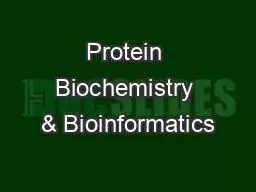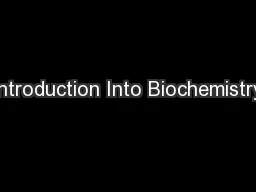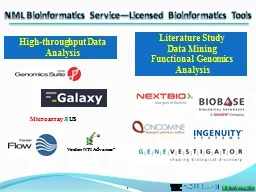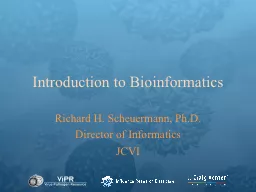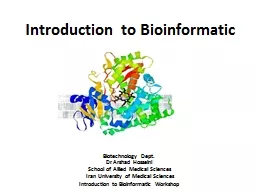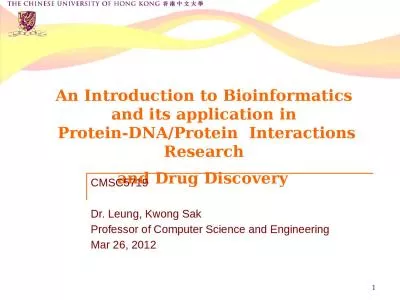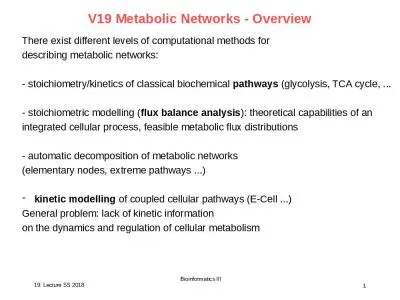PPT-Protein Biochemistry & Bioinformatics
Author : brambani | Published Date : 2020-06-16
Dynamic modeling Stefan Legewie amp Sofya Lipnitskaya Institute of Molecular Biology Mainz What is dynamic model of a biological system g Comparisonfitting to data
Presentation Embed Code
Download Presentation
Download Presentation The PPT/PDF document "Protein Biochemistry & Bioinformatic..." is the property of its rightful owner. Permission is granted to download and print the materials on this website for personal, non-commercial use only, and to display it on your personal computer provided you do not modify the materials and that you retain all copyright notices contained in the materials. By downloading content from our website, you accept the terms of this agreement.
Protein Biochemistry & Bioinformatics: Transcript
Download Rules Of Document
"Protein Biochemistry & Bioinformatics"The content belongs to its owner. You may download and print it for personal use, without modification, and keep all copyright notices. By downloading, you agree to these terms.
Related Documents

